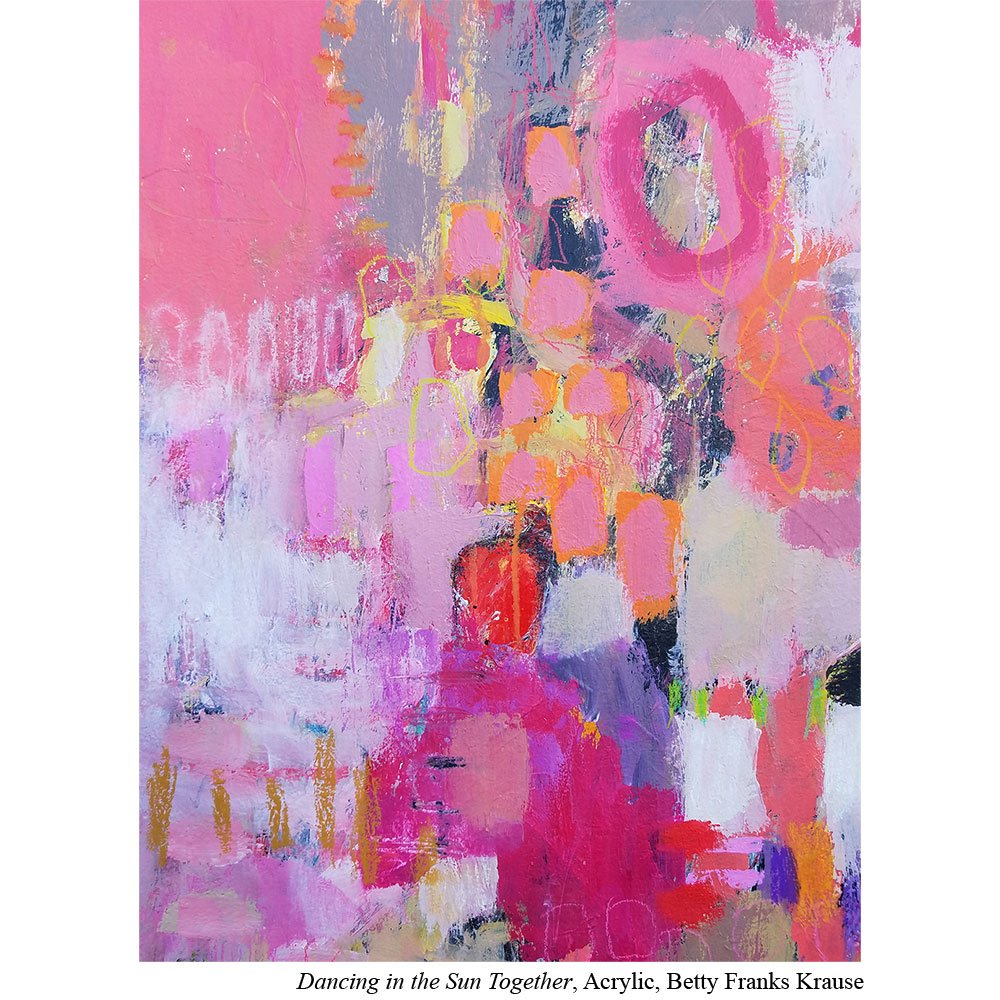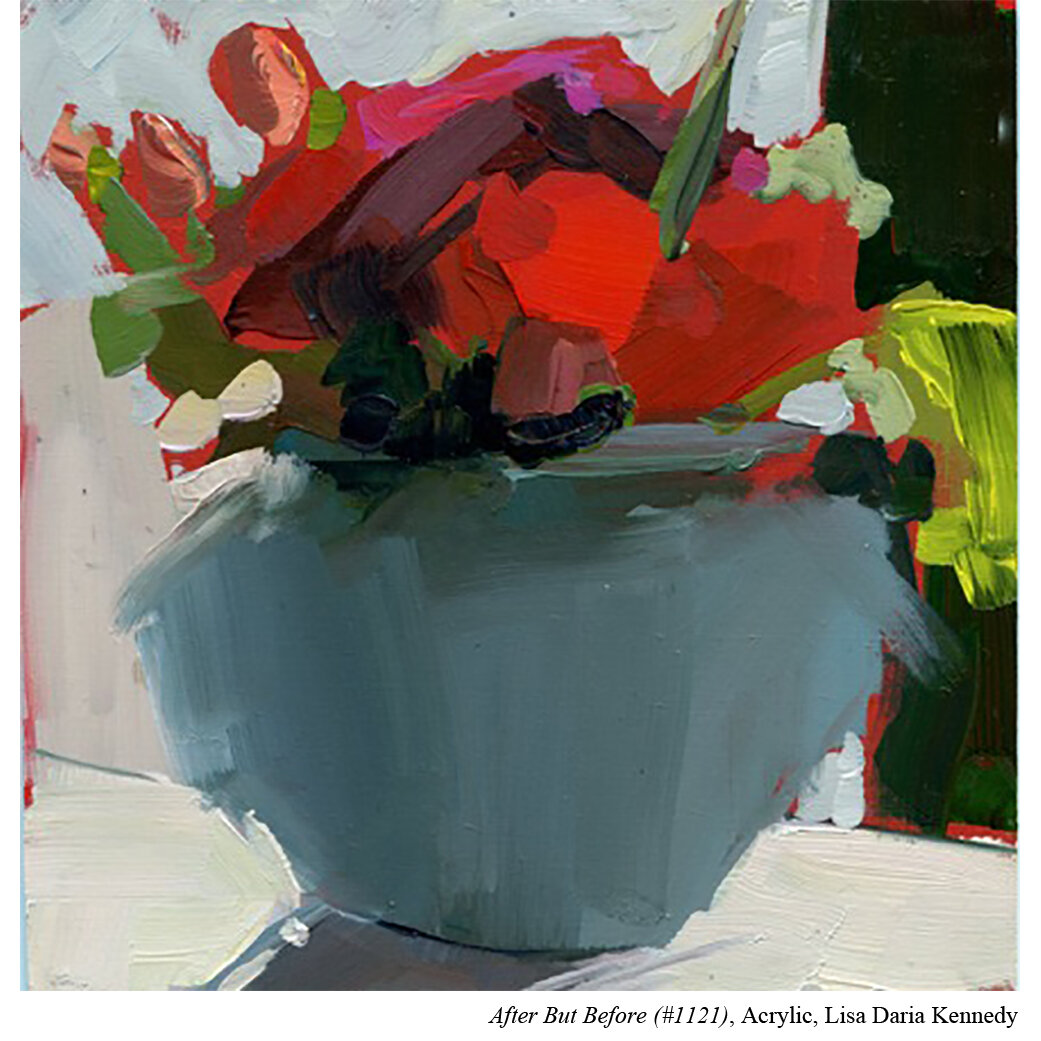Three Acrylic Artists: The Palettes They Use and Why
Whether it’s a piece of plexi or a disposable paper palette, your palette is an integral part of your painting process.
First, it’s where you place your fresh paints. Whether that’s fast drying acrylic, or wells filled with fresh watercolor, your palette is a holding space for clean colors straight from the tube.
Second, when you’re ready to mix a color, the palette holds that mix. Maybe that color goes directly onto the canvas or maybe once your colors are mixed, that palette goes into a freezer a la Sarah Sedwick, ready to pull out for the next painting session. Your palette is the place to hold your mixed colors.
And finally, the palette you use will affect HOW you work. If you have a palette that's too tiny, you may not be able to mix large enough mixes of paint to paint large. If your palette doesn’t keep mixes wet and workable, maybe it’s adding frustration to your painting process.
A palette has to work on all three fronts, helping you create the type of work you want to create. So in order to help us make sure we’re working in a way that works for us, we’re going to look at three acrylic artists, the palettes they use and why those work for them.
MELANIE MORRIS
Melanie Morris (Ep.34) is an acrylic floral and landscape artist. Her process includes creating small painting studies before moving up to larger paintings.
Morris keeps her fresh tube colors in a Sta-Wet palette. A Sta-Wet palette is one that includes a piece of mixing paper that sits atop a thin sponge. By having some moisture in the sponge (but not too much!) an artist can keep their acrylic paints from drying out.
For Morris’ mixing palette, if she’s working small, she uses a disposable, paper palette. If she’s working large, she’ll often use a second Sta-Wet palette. She moves color mixes she still needs later in the painting (or after a night’s sleep) over to that second Sta-Wet to keep wet.
The Sta-Wet two-palette system allows her to have some of her original mixes if she’s working between a few sessions. Acrylic paint dries darker. Occasionally Morris will come back to a painting and realize that some piece of her painting is too dark.
For example, if she comes back in the morning and realizes the sky is too dark, she’ll need to mix the sky color again. By keeping the original sky color mix, she can compare it to her new mix to make sure she has in fact, gone lighter.
The two-palette system over all means that Morris can be confident that she is always pulling from wet color. She doesn’t have to worry about her pure pigments drying out while she’s mixing colors elsewhere. It also means she doesn’t have to set up her palette each and every time she enters the studio. The fresh paints can be there and ready from a previous day’s work.
LISA DARIA KENNEDY
Lisa Daria Kennedy (Ep. 14) is a daily floral painter. She begins each and every day (she’s at over 4,600 continuous days as of this article’s writing) by finishing a floral painting. This is before she starts her day as a teacher and as a painter of other types of artwork.
Kennedy wants a process that is as streamlined and fast as possible. She wants to keep her barriers to both painting and clean up as low as possible.
For this reason, she turns to disposable paper products for her palette and mixing palette.
At the start of each painting session, Kennedy will lay out fresh heavy-body paints onto a disposable paper plate. She then pulls those colors onto a phone book page for mixing.
When she runs out of mixing space or wants to make sure she’s creating an extra clean color, she can rip out the used page and start fresh on a new one.
This way of working allows her to get painting and move through her painting quickly. It also affords the simplest clean up possible. She’s not worried about keeping unused paint or being precious with her materials. Her focus is on tossing everything at the end of her session and getting back to a baseline so that she can get on with her day.
BETTY FRANKS KRAUSE
Betty Franks Krause (Ep. 10) is a non-representational acrylic painter. She works both medium sized and large. She wants her painting experience to be one that’s unencumbered so that she can move physically and be expressive in her work.
For this reason she makes her entire working space her palette by wrapping her work table with 4 mil plastic. This means she can mix wherever she wants and doesn’t have to worry at all about enough space for mixing the bright colors she loves in her work. The walls of her studio and her 6 foot working table are all covered in it.
For her fresh colors, she squeezes out her pigments with cools on one side, warms on the other and a big strip of white down the middle. This abundance of white is a reminder for her to use it. Each of her color mixes includes at least a little white. Mixing this way (and being reminded to use white by her palette set up) gives her paintings the colorful brightness she’s known for.
Franks Krause isn’t precious about her paint. She always puts out more than she’ll need. And if it dries on the plastic, no problem. She can either work on top of it, squeeze out her colors somewhere else, or peel up the dried acrylic from the plastic. (That’s why the 4 mil plastic is particularly important because it makes peeling paint easy.)
This palette and mixing approach allows her to work large and freely.
FINDING WHAT WORKS FOR YOU
There are many ways you can manage your paints and color mixes when painting. Palette management isn’t just about how you feel when you're in the middle of the painting, it’s also about how you feel headed into your studio and coming out again.
Think about what you want from your process. Do you want an easy clean up? A large mixing area? As few steps to get started as possible?
Or maybe you want a system that allows you to not waste paint or to be able to save color mixes between working sessions.
Get articles like this and new podcast episodes sent straight to your inbox by signing up for the newsletter below.






